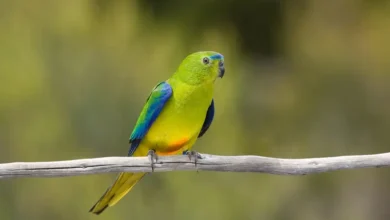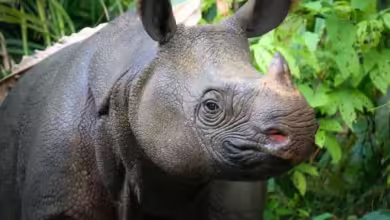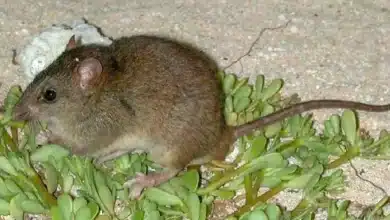Poachers Killing a Rhino
South Africa Stands To Lose As Many Rhinos This Year As It Lost In 2010—And A Poaching Crackdown Might Not Stop The Trend
In spite of a sometimes-lethal crackdown on rhinoceros poachers, South Africa seems to be on track to lose as many rhinos to poaching in 2011 as is did in 2010, when illegal hunters killed close to one each day.

“Unfortunately the 2010 poaching trend does not seem to have changed, with now 28 rhinos having been poached since January, 2011,” World Wildlife Fund African rhino program manager Dr. Joseph Okori told https://www.biolife.earth in a mid-February e-mail exchange.
Dr. Okori added, “Organized crime is growing across Africa; we have seen it spreading from Southern Africa to Eastern Africa. Current poaching rates mimic those of 2010 in which we saw over 300 rhino killed in South Africa alone. These losses recorded were driven by the actual black market demand for rhino horn in East Asia. If no further law enforcement efforts by regional governments are put in place over and beyond those noted in 2010, we can assume that similar poaching pressure will persist and subsequent losses will be seen.”
In fact, South Africa lost 333 rhinos in 2010—almost triple the number that poachers killed in 2009. Wildlife officials in the country have responded by beefing up security in some of their game parks as well as by becoming more aggressive with the illegal hunters—a policy that has resulted in the deaths of at least nine poachers who engaged in firefights with rangers since the beginning of January. By contrast, fewer than a half-dozen poachers were killed in all of 2010.
In addition, this year South African army troops are expected to begin helping rangers patrol Kruger National Park, the huge, Massachusetts-sized jewel of the country’s system of parks and preserves, and a major source of tourism dollars. South Africa is home to the vast majority of the world’s remaining rhinos: perhaps as many as 19,000 white rhinos, which are listed by the International Union for the Conservation of Nature (IUCN) as Near Threatened, and around 1,500 Critically Endangered black rhinos—about half of Africa’s (and the world’s) remaining wild population. Populations of both species were on the rise until a couple of years ago, when folk-medicine-makers in the newly affluent China and other growing Asian countries began paying increasingly astronomical prices for rhino horn, which is ground up and used as a “cure” for fevers and other maladies. With the per-kilo price for horns now greater by around one third than that of gold, the potential profits have not only made it worthwhile for poachers to take greater risks, but it has enabled them to purchase and use sophisticated technology, weapons, and even aircraft in their pursuit of illegal riches.

Kenya, another African country that relies on wildlife tourism for a great deal of revenue, recently has also been fielding more, and more aggressive, law enforcement personnel to combat poachers.
However, in spite of the sharp upswing in operations by increasingly well-organized and well-armed poaching networks, Dr. Okori said he did not think lethal attacks on poachers would prove to be an effective answer to the problem.
“The up-surge in violent confrontations between law enforcement wildlife authorities and poachers is not a coincidence but rather a result of increased government effort to actively track down and patrol park areas,” Dr. Okori told https://www.biolife.earth.
“In other words, government has stepped up on-the-ground efforts resulting in increased contact with poachers. However, the poachers too have stepped up their own operations inspired by increased fire-power which seems to have inspired them to confront government wildlife law enforcement officers. Cases have been reported where officers have been fired upon by poachers, resulting in fire-fights in which poachers often find then selves at the losing end against well-trained officers.”
Dr. Okori added, “Whether this will make a real difference is highly debatable. Just killing poachers does not address the root cause of the poaching, but rather is just dealing with the symptoms of a chronic problem. In short, it will not make a significant difference to the poaching crisis in South Africa as long as the demand for rhino horn is not addressed and the higher criminal networks that propagate this unacceptable practice are not disrupted and eventually put out of action.

“Experience has shown that even “shoot-to-kill” policies being enforced by some African countries have not been an effective anti-poaching measure in itself. We have to deal with the source of the demand, cut it off and the supply will fade as their will be no incentive to poach and many lives will be saved. Loss of human life is regrettable.”
Dr. Okori said that the WWF was in ongoing conversations with elements of the Chinese government in an attempt to curb demand for rhino horn and other wildlife products in that country. Citing the delicacy of the talks, Dr. Okori declined to say which Chinese agencies or officials were involved, and whether any progress was being made.
The battle to save white rhinos is especially poignant, as the species has already battled back once from the edge of extinction. At the beginning of the twentieth century, there were only around 20 white rhinos remaining in South Africa. They were able to repopulate to their current, and relative, abundance only with the help of strict conservation measures that included breeding programs.
BY PAUL GUERNSEY



